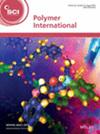Maissa Agsous, Khireddine Hafit, Sabeha Yala, Busra Oktay, Ayşe Betül Bingöl, İlkay Şenel, Cem Bülent Üstündağ
求助PDF
{"title":"Anti-tumoural activity of 3D printed fluorohydroxyapatite–polylactic acid scaffolds combined with graphene oxide and doxorubicin","authors":"Maissa Agsous, Khireddine Hafit, Sabeha Yala, Busra Oktay, Ayşe Betül Bingöl, İlkay Şenel, Cem Bülent Üstündağ","doi":"10.1002/pi.6743","DOIUrl":null,"url":null,"abstract":"<p>This study focuses on the synthesis of fluorohydroxyapatite (FHA), and the realization of scaffolds by 3D printing using polylactic acid (PLA) as polymer and graphene oxide (GO). The synthesis of FHA was carried out by the usual sol–gel method. The realization of the 3D scaffold was achieved with the 3D printing method. Four scaffolds were printed with PLA: the first was made with FHA and PLA (FHA/PLA), the second was made with GO in addition to FHA and PLA (FHA/PLA/GO), and the third and fourth ones were the FHA/PLA and FHA/PLA/GO scaffolds coated with electrosprayed hydrogel solution of doxorubicin (DOX) and polyvinyl alcohol (PVA): FHA/PLA/DOX/PVA and FHA/PLA/GO/DOX/PVA. The FHA and GO powders were characterized using Fourier transform infrared analysis and X-ray diffraction analysis. A dissolution study was carried out with different contents of PVA (2.5%, 3% and 4%) to identify the scaffold with the best drug release profile. The 3% w/w PVA hydrogel solution was the best, so the drug release kinetics and drug release mechanism were studied using the most famous mathematical models: zero-order model, Higuchi's model and Korsmeyer–Peppas model (power law model). The porosity of the 3D printed scaffolds was assessed by SEM and, finally, the cellular response of each scaffold on the viability of CDD human fibroblast cells was evaluated using the 3-(4,5-dimethylthiazol-2-yl)-2,5-diphenyltetrazolium bromide (MTT) assay. The sol–gel synthesis produces FHA, used in the realization of the scaffolds. The scaffolds have mixed porosity (macropores and micropores) promoting cell adhesion and proliferation, as shown by the results of the MTT assay. The addition of GO decreases the cell viability but keeps the scaffolds still biocompatible, and adding both DOX and GO to the FHA/PLA scaffolds has a negative impact on cell viability because DOX and GO remain toxic at the given percentages. © 2025 Society of Chemical Industry.</p>","PeriodicalId":20404,"journal":{"name":"Polymer International","volume":"74 3","pages":"277-285"},"PeriodicalIF":3.6000,"publicationDate":"2025-01-09","publicationTypes":"Journal Article","fieldsOfStudy":null,"isOpenAccess":false,"openAccessPdf":"","citationCount":"0","resultStr":null,"platform":"Semanticscholar","paperid":null,"PeriodicalName":"Polymer International","FirstCategoryId":"92","ListUrlMain":"https://scijournals.onlinelibrary.wiley.com/doi/10.1002/pi.6743","RegionNum":4,"RegionCategory":"化学","ArticlePicture":[],"TitleCN":null,"AbstractTextCN":null,"PMCID":null,"EPubDate":"","PubModel":"","JCR":"Q2","JCRName":"POLYMER SCIENCE","Score":null,"Total":0}
引用次数: 0
引用
批量引用
Abstract
This study focuses on the synthesis of fluorohydroxyapatite (FHA), and the realization of scaffolds by 3D printing using polylactic acid (PLA) as polymer and graphene oxide (GO). The synthesis of FHA was carried out by the usual sol–gel method. The realization of the 3D scaffold was achieved with the 3D printing method. Four scaffolds were printed with PLA: the first was made with FHA and PLA (FHA/PLA), the second was made with GO in addition to FHA and PLA (FHA/PLA/GO), and the third and fourth ones were the FHA/PLA and FHA/PLA/GO scaffolds coated with electrosprayed hydrogel solution of doxorubicin (DOX) and polyvinyl alcohol (PVA): FHA/PLA/DOX/PVA and FHA/PLA/GO/DOX/PVA. The FHA and GO powders were characterized using Fourier transform infrared analysis and X-ray diffraction analysis. A dissolution study was carried out with different contents of PVA (2.5%, 3% and 4%) to identify the scaffold with the best drug release profile. The 3% w/w PVA hydrogel solution was the best, so the drug release kinetics and drug release mechanism were studied using the most famous mathematical models: zero-order model, Higuchi's model and Korsmeyer–Peppas model (power law model). The porosity of the 3D printed scaffolds was assessed by SEM and, finally, the cellular response of each scaffold on the viability of CDD human fibroblast cells was evaluated using the 3-(4,5-dimethylthiazol-2-yl)-2,5-diphenyltetrazolium bromide (MTT) assay. The sol–gel synthesis produces FHA, used in the realization of the scaffolds. The scaffolds have mixed porosity (macropores and micropores) promoting cell adhesion and proliferation, as shown by the results of the MTT assay. The addition of GO decreases the cell viability but keeps the scaffolds still biocompatible, and adding both DOX and GO to the FHA/PLA scaffolds has a negative impact on cell viability because DOX and GO remain toxic at the given percentages. © 2025 Society of Chemical Industry.
氧化石墨烯与阿霉素复合3D打印氟羟基磷灰石-聚乳酸支架的抗肿瘤活性
本研究的重点是氟羟基磷灰石(FHA)的合成,以及以聚乳酸(PLA)为聚合物和氧化石墨烯(GO)为材料的3D打印支架的实现。FHA的合成采用溶胶-凝胶法制备。利用3D打印技术实现了三维支架的实现。用PLA打印四种支架:第一种是FHA和PLA (FHA/PLA),第二种是除FHA和PLA外的GO (FHA/PLA/GO),第三和第四个是FHA/PLA和FHA/PLA/GO支架,FHA/PLA/DOX/PVA和FHA/PLA/ PVA是用阿霉素(DOX)和聚乙烯醇(PVA)的电喷涂水凝胶溶液涂覆FHA/PLA/ PVA和FHA/PLA/GO/DOX/PVA。利用傅里叶变换红外分析和x射线衍射分析对FHA和GO粉末进行了表征。在不同PVA含量(2.5%、3%和4%)下进行溶出度研究,以确定具有最佳药物释放特性的支架。以3% w/w的PVA水凝胶溶液为最佳,采用最著名的数学模型:零阶模型、Higuchi模型和Korsmeyer-Peppas模型(幂律模型)研究其药物释放动力学和释药机理。通过扫描电镜评估3D打印支架的孔隙度,最后,使用3-(4,5-二甲基噻唑-2-基)-2,5-二苯基溴化四唑(MTT)试验评估每个支架对CDD人成纤维细胞活力的细胞反应。溶胶-凝胶合成制备FHA,用于支架的实现。MTT实验结果表明,支架具有促进细胞粘附和增殖的混合孔隙(大孔和微孔)。氧化石墨烯的加入降低了细胞活力,但保持了支架的生物相容性,并且在FHA/PLA支架中添加DOX和GO会对细胞活力产生负面影响,因为DOX和GO在给定百分比下仍具有毒性。©2025化学工业协会。
本文章由计算机程序翻译,如有差异,请以英文原文为准。




 求助内容:
求助内容: 应助结果提醒方式:
应助结果提醒方式:


